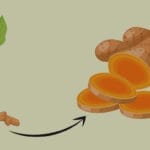Natural approaches to overcome seasonal affective disorder (SAD)
The term “seasonal affective disorder” – appropriately abbreviated SAD – is used frequently at this time of year coinciding with the dark, long winter nights and very little daylight, let alone sunshine, to be seen. But SAD isn’t an invented excuse for lazy behaviour! On the contraty, seasonal depression is experienced by a growing number of people in the UK seasonal depression flaring in the autumn and winter and only fully remitting in the spring and summer
So what can we do to support our mood and energy during the winter months and stave off SAD? The simplest way to prevent seasonal depression is to move to a tropical island with warm, sandy beaches, perfect blue skies, and gentle breezes that rustle the leaves of nearby palm trees.
…But for those of us living in the rest of the world, there’s hope yet. Here are some simple, scientifically-based strategies to help keep seasonal depression at bay:
Light therapy
Light therapy is perhaps the least invasive and most researched treatment for SAD, and for this reason, is considered first-line therapy for the condition. Light therapy consists of sitting before a bright light (a specific daylight lamp and not just your average light bulb) for at least 30 minutes one or more times daily.
The sensitivity of the retina (the back of the eye) to ambient light appears to contribute to SAD. Whether it’s caused by fewer hours of sunlight during the days of winter, genetic influences, or physical factors like eye colour (it’s thought that the eyes of people with darker-coloured irises don’t absorb as much light), the effect is the same: the less light the retina perceives, the worse the brain functions, with both visual and non-visual brain cells affected. In fact, diminished central nervous system perception of light is thought to cause deficits in cognitive function, mood, and alertness, and to exacerbate the circadian rhythm dysfunction commonly seen in SAD.
Diminished central nervous system perception of light is thought to cause deficits in cognitive function, mood, and alertness, and to exacerbate the circadian rhythm dysfunction commonly seen in SAD.
Several studies have demonstrated the efficacy of light therapy – also called light box therapy – in the treatment of SAD. Light therapy works best with the right combination of light intensity (recorded in lux), duration of treatment, and timing. Higher-intensity lights (10,000 lux) yield benefits in as short as 20 minutes a day, whereas lower-intensity lights (such as 2,500 lux) will require longer sessions to create the same benefits. Because UV light can cause injury to the eyes and increase the risk of skin cancer, it’s best to use a configuration that filters out UV. This is often done by placing a simple plastic light cover with UV-filtering properties in front of the bright light. Specifically, the standard recommendation for light therapy is to use a 10,000-lux light box, positioned 16 to 24 inches from the face, for 20 to 30 minutes a day, every morning, through the duration of winter.
Vitamin D
Vitamin D receptors (VDR) have been identified in at least 36 different tissues of the human body, including numerous regions of the brain. Vitamin D also acts as a hormone, affecting the thyroid and adrenal glands, the pancreas, the ovaries and testes, the kidneys, and the digestive tract.
The majority of our body’s vitamin D is produced when the skin is exposed to UVB radiation from the sun. This means those of us living far from the equator tend to have lower blood levels of the nutrient in the autumn and winter as compared to the sunny summer months. With the dip in vitamin D levels comes a dip in mood; low levels of vitamin D have been linked with depression. This risk is greater in people of colour, as the more pigmentation there is in one’s skin, the less efficiently the body photosynthesizes vitamin D.
The majority of our body’s vitamin D is produced when the skin is exposed to UVB radiation from the sun. This means those of us living far from the equator tend to have lower blood levels of the nutrient in the autumn and winter as compared to the sunny summer months.
Although commercial lab companies report the normal range of vitamin D levels (measured by the vitamin D, 25-hydroxy test) to be as low as 20ng/mL, many physicians and researchers call for a lower limit of 30ng/mL, and still other integrative practitioners – aware that the current reference range is based primarily upon the research regarding bone density and does not take into consideration the importance of vitamin D for immune health, hormone signalling, and its myriad other functions – call for an even higher reference range.
Although many mechanisms for vitamin D’s influence on mood have been proposed, one worth mentioning here is the nutrient’s influence on the synthesis of the neurotransmitters serotonin – which plays an integral role in supporting mood, memory, and learning – and dopamine – which controls motivation, thinking, and concentration.
Unsurprisingly, supplementing with vitamin D3 (the active form of the nutrient) has been shown to help those with SAD feel better and to generally improve psychiatric health. Vitamin D3 supplements now also come in vegan forms and also combined with other crucial nutrients such as vitamins A and K2.
Methylated B vitamins
Folate and the B vitamins are crucial nutrients for numerous reactions in the human body, in particular, those pertaining to neurotransmitter production and neurological health.
For this reason, those with folate deficiencies are less likely to respond to antidepressant medications, are more likely to relapse, and have poorer cognitive performance, whereas those with adequate intake of folate have been shown to be less likely to develop depression.
Folate supplements come in three forms: folic acid, folinic acid, and L-methylfolate. The first two forms require an enzyme known as methylenetetrahydrofolate reductase (MTHFR) in order to convert them to L-methylfolate, the active form of the nutrient capable of crossing the blood-brain barrier (BBB) and activating the synthesis of the neurotransmitters dopamine, norepinephrine, and serotonin. Because many individuals have genetic mutations compromising MTHFR function, supplementing with the L-methylfolate form may be a more reliable way to ensure proper folate status.
Because many individuals have genetic mutations compromising MTHFR function, supplementing with the L-methylfolate form may be a more reliable way to ensure proper folate status.
MTHFR mutations can also affect the proper utilisation of vitamin B12. Without proper MTHFR function, the cheaper commercially available forms of B12 (cyanocobalamin and hydroxycobalamin) have limited conversion to methylcobalamin, the active form of the nutrient. For this reason, more and more clinicians are choosing methylcobalamin preparations.
Studies have demonstrated the role of folate and B-vitamins in slowing the progression of cognitive decline and possibly reducing the risk of depression in people above the age of 60, and a study of pregnant adolescent females found that those with higher dietary intake of B12 and folate were less likely to suffer from depression. It has also been shown that those with MTFHR genetic mutations are at increased risk of depression.
Research suggests that B12 and folate supplementation are more likely to help when taken on a long-term basis, as opposed to a short course of therapy for acute troubles. Because the main source of vitamin B12 comes from red meat, furthermore, vegetarians and vegans are at high risk of becoming deficient. Maintenance supplementation with methylated folate and methylcobalamin may, therefore, be a simple way to stave off SAD and depression.
There are also lifestyle hacks that you can use to support mood and sleep including sticking to a bedtime routine that promotes great quality of sleep.
These include:
- Switching off from technology at least 1 hour before bed.
- Create a calming bedtime routine.
- Have soft lighting around the house before bedtime.
- Go to bed roughly the same time every night and ideally lights out by 10.30 pm.
- Avoid caffeine after 2 pm and avoid alcohol.
- Enjoy daily foods naturally high in tryptophan, the precursor to our sleep inducing hormone melatonin, e.g. turkey, lamb, chicken, nuts, oats, cheese, spirulina.
- Take a natural plant based supplement containing 5-HTP, passionflower and chamomile extracts alongside organic magnesium citrate and vitamins to further promote melatonin production.
For more information about herbal remedies and hacks to support mood and sleep the please enjoy the following Nutrigold blogs:
Are You Surviving Or Thriving
How To Hack Your Habits Part 1 – Change The Way You Eat
How to Hack Your Habits Part 2: Surviving the Stress Epidemic
How To Hack Your Habits Part 3 – Get Moving!
How to Hack Your Habits Part 4: Are You Sleep-Deprived?
References
[1] Jacobsen FM, et al. Seasonal affective disorder: a review of the syndrome and its public health implications. Am J Public Health 1987;77:57-60.
[2] Wirz-Justice A. Seasonality in affective disorders. Gen Comp Endocrinol. 2018 Mar 1;258:244-9.
[3] Kurlansik SL, Ibay AD. Seasonal affective disorder. Am Fam Physician. 2012 Dec 1;86(11):1037-41.
[4] Cools O, et al. Pharmacotherapy and nutritional supplements for seasonal affective disorders: a systematic review. Expert Opin Pharmacother. 2018 Aug;19(11):1221-33.
[5] Kardon RH, et al. Entrance pupil size predicts retinal illumination in darkly pigmented eyes, but not lightly pigmented eyes. Invest Ophthalmol Vis Sci. 2013;54 (8):5559-67.
[6] Rohan KJ, et al. Biological and psychological mechanisms of seasonal affective disorder: a review and integration. Curr Psychiatry Rev. 2009;5:37-47.
[7] Roeklein KA, et al. The post illumination response is reduced in seasonal affective disorder. Psychiatry Res. 2013;210(1):150-8.
[8] Meesters Y, et al. The effects of low-intensity narrow-band blue-light treatment compared to bright white-light treatment in seasonal affective disorder. J Affect Disord. 2018 May;232:48-51.
[9] Miller AL. Epidemiology, etiology and natural treatment of a seasonal affective disorder. Altern Med Rev 2005;10:5-13.
[10] Lam J. Measuring the Spectral Characteristics of a Light Therapy Lamp. January 12, 2018 [cited 2018 Sept 24]. Available from: http://justinmklam.com/posts/2018/01/sad-lamp/
[11] Mayo Clinic Staff. Light therapy [Internet]. Mayo Clinic Online. 2017 [cited 2018 Sept 19]. Available from: https://www.mayoclinic.org/tests-procedures/light-therapy/about/pac-20384604
[12] DeLuca GC, et al. Review: the role of vitamin D in nervous system health and disease. Neuropathol Appl Neurobiol. 2013;39:458-84.
[13] Eyles DW. Vitamin D, effects on brain development, adult brain function and the links between low levels of vitamin D and neuropsychiatric disease. Front Neuroendocrinol. 2013 Jan;34(1):47-64.
[14] Holick MF. Vitamin D: physiology, molecular biology, and clinical applications.2nd ed. New York: Springer; 2010.
[15] Kronfeld-Schor N, Einat H. Circadian rhythms and depression: human psychopathology and animal models. Neuropsychopharmacology. 2012;62: 101-14.
[16] Tsiaras WG, Weinstock MA. Factors influencing vitamin D status. Acta Derm Venereol. 2001;91:115-24.
[17] Kasahara AK, et al. Vitamin D serum seasonality in the United States. PLoS One. 2013;8(6):e65785.
[18] Kerr DC, et al. Associations between vitamin D levels and depressive symptoms in healthy young adult women. Psychiatry Res. 2015 May 30;227(1):46-51.
[19] Anjum I, et al. The role of vitamin D in brain health: a mini literature review. Cureus. 2018 Jul 10;10(7):e2960.
[20] Jablonski ND, Chaplin G. Human skin pigmentation as an adaptation to UV radiation. Proc Natl Acad Sci USA. 2010;2:8962-8.
[21] Yuen AWC, Jablonski NG. Vitamin D: in the evolution of human skin colour. Med Hypotheses. 2010;74(1):39-44.
[22] Nguyen HCT. Vitamin D3 25-Hydroxyvitamin D [Internet]. Medscape; Feb 07, 2014 [cited Sept 25, 2018]. Available from: https://emedicine.medscape.com/article/2088694-overview
[23] Dawson-Hughes B. Vitamin D deficiency in adults: definition, clinical manifestations, and treatment [Internet]. UpToDate; Oct 25, 2017 [cited Sept 25, 2018]. Available from: https://www-uptodate-com.
[24] Roger R. Vitamin D and extraskeletal health [Internet]. UpToDate; Jul 12, 2018. [cited Sept 25, 2018]. Available from: https://www-uptodate-com.
[25] Hyman M. Vitamin D – why you are probably NOT getting enough [Internet]. Mark Hyman, MD; Aug 24, 2010 [cited Sept 25, 2018]. Available from: https://drhyman.com/blog/2010/08/24/vitamin-d-why-you-are-probably-not-getting-enough/
[26] Patrick RP, Ames BN. Vitamin D hormone regulates serotonin synthesis. Part 1: relevance for autism. FASEB J. 2014;12:1-16.
[27] Gloth FM 3rd, et al. Vitamin D vs broad spectrum phototherapy in the treatment of seasonal affective disorder. J Nutr Health Aging. 1999;3(1):5-7.
[28] Humble MB. Vitamin D, light and mental health. J Photochem Photobiol B. 2010 Nov 3;101(2):142-9.
[29] Martínez-Cengotitabengoa M, González-Pinto A. Nutritional supplements in depressive disorders. Actas Esp Psiquiatr. 2017 Sep;45(Supplement):8-15.
[30] Brito A, et al. [Folate, vitamin B12 and human health]. Rev Med Chil. 2012 Nov;140(11):1464-75.
[31] Papakostas GI, et al. L-methylfolate as adjunctive therapy for SSRI-resistant major depression: results of two randomized, double-blind, parallel-sequential trials. Am J Psychiatry. 2012 Dec;169(12):1267–74.
[32] Fava M, Mischoulon D. Folate in depression: efficacy, safety, differences in formulations, and clinical issues. J Clin Psychiatry. 2009;70(Suppl 5):12–7.
[33] Bender A, et al. The association of folate and depression: A meta-analysis. J Psychiatr Res. 2017 Dec;95:9-18.
[34] Zhao G, et al. Use of folic acid and vitamin supplementation among adults with depression and anxiety: a cross-sectional, population-based survey. Nutr J. 2011 Sep 30;10:102.
[35] Owen RT. Folate augmentation of antidepressant response. Drugs Today (Barc). 2013 Dec;49(12):791–8.
[36] Lynch B. What is MTHFR? [Internet]. 2011
[37] Moore K, et al. Diet, nutrition and the aging brain: current evidence and new directions. Proc Nutr Soc. 2018 May;77(2):152-63.
[38] Singh A, et al. Micronutrient dietary intake in Latina pregnant adolescents and its association with the level of depression, stress, and social support. Nutrients. 2017 Nov 4;9(11).
[39] Wu YL, et al. Association between MTHFR C677T polymorphism and depression: an updated meta-analysis of 26 studies. Prog Neuropsychopharmacol Biol Psychiatry. 2013 Oct 1;46:78-85.
[40] Almeida OP, et al. Systematic review and meta-analysis of randomized placebo-controlled trials of folate and vitamin B12 for depression. Int Psychogeriatr. 2015 May;27(5):727-37.
[41] Rizzo G, et al. Vitamin B12 among vegetarians: status, assessment and supplementation. Nutrients. 2016 Nov 29;8(12).







